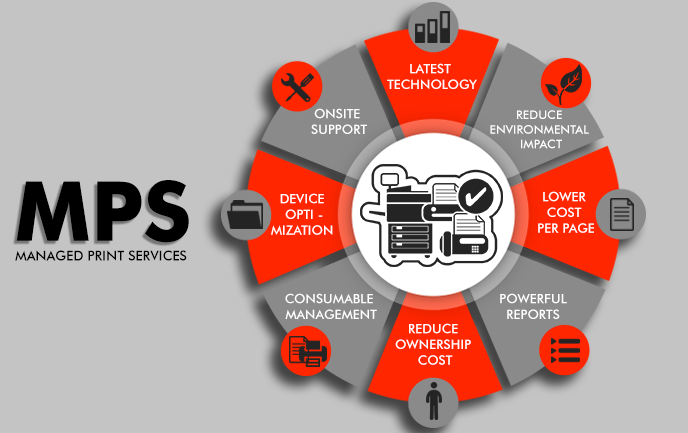A Strategic Analysis of the Shifting Dynamics in Managed Print Services Market Share

Understanding the distribution of the Managed Print Services Market Share provides a clear view into the competitive hierarchy and strategic positioning of the key players in this mature yet dynamic industry. The market is primarily led by a group of well-established original equipment manufacturers (OEMs) who have successfully built extensive service delivery capabilities around their core hardware products. These leaders are engaged in a constant battle for dominance through technological innovation, service portfolio expansion, and channel partner strategies. The immense financial opportunity within the market is the primary driver of this competition, as the industry is forecast to expand to USD 82.90 billion by 2030, growing at a steady compound annual rate of 9.20%, making every point of market share a highly strategic asset.
The leaders in the MPS market, often categorized by industry analysts in a "Magic Quadrant" or "Vendor Landscape," are typically the major printer and copier manufacturers. Companies like HP Inc., Xerox, Ricoh, and Canon consistently hold dominant positions. Xerox, a pioneer in the field, has a strong reputation and deep expertise, particularly in the large enterprise segment. HP Inc. leverages its massive global install base of printers and its strong channel partner network to command a significant share, especially in the mid-market and distributed office environments. Japanese manufacturers like Ricoh, Canon, and Konica Minolta have powerful direct sales forces and strong offerings in both office and production print environments, giving them a substantial and stable share of the global market.
The competitive landscape is not limited to the top-tier OEMs. A vital component of the market consists of a vast and diverse ecosystem of channel partners. This includes independent office equipment dealers, value-added resellers (VARs), and IT service providers. These partners play a crucial role in reaching small and medium-sized enterprises (SMEs), a segment that the large OEMs may find difficult to serve directly and cost-effectively. These channel partners often have deep, long-standing relationships with local businesses and can offer a more personalized level of service. Market share in the SME segment is therefore highly fragmented, with these independent dealers and resellers collectively holding a significant portion of the business, often by delivering MPS solutions built upon the technology platforms of one or more of the major OEMs.
Several strategic factors are influencing the shifts in market share. The ability to offer solutions that go "beyond print" is becoming a key differentiator. Providers who can successfully integrate MPS with document management systems, workflow automation tools, and broader IT services are gaining a competitive advantage. The shift to cloud-based service delivery is another critical factor, with providers who offer robust, secure, and user-friendly cloud platforms capturing share from those with legacy on-premise solutions. Furthermore, as the hybrid work model becomes permanent, the ability to effectively manage print services for a distributed workforce, including home office environments, is emerging as a new battleground for market share among the leading providers in this constantly evolving industry.
Explore Our Latest Trending Reports:
Europe Open Source Intelligence (Osint) Market
- Music
- Travel
- Technology
- AI
- Business
- Wellness
- Theater
- Sports
- Shopping
- Religion
- Party
- Other
- Networking
- Art
- Literature
- Home
- Health
- Gardening
- Juegos
- Food
- Fitness
- Film
- Drinks
- Dance
- Crafts
- Causes
